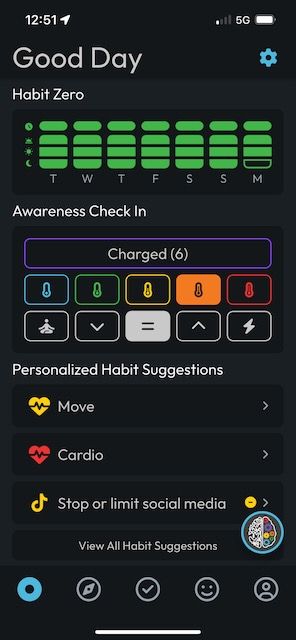
Motivation Is Fickle
When most people think about habits, they believe that the secret is motivation.
“If I were just more motivated, I would exercise more.”
The problem with this approach is that motivation is fickle.
It comes and goes.
It has highs and lows.
And several factors make up this thing called motivation.
One of my favourite models for motivation comes from the world’s leading researcher of motivation, Piers Steel, Ph.D.
In his book “The Procrastination Equation,” Steel outlines a formula for motivation.
I will be sharing a slightly modified version of the formula from modern-day Philosopher and Founder of Heroic, Brian Johnson.
The Motivation Equation
Your level of motivation will be determined by …
Motivation = Energy ( Value x Expectancy / Impulsivity x Delay )
Let’s take a closer look at each variable.
Energy
Energy refers to your current energy level.
You’ve probably noticed that your energy levels fluctuate throughout the day.
Sometimes, your energy levels are high (maybe first thing in the morning or late at night).
And sometimes your energy levels are low (perhaps right after lunch).
The key here is to dial-in your energy levels.
Ensure you are eating, sleeping and moving throughout the day to maintain high energy levels.
Value
Value has to do with meaning.
Do you value whatever it is that you are working on?
If your meaning is high … that’s great!
Low levels will make you less motivated and more likely to procrastinate.
Expectancy
Expectations play a crucial role when it comes to installing habits.
Do you expect to be successful?
Are you confident in your ability to follow through?
Your motivation will be low if you don’t believe what you are doing is possible.
Now, that’s the numerator.
We want the values above the line to be as high as possible.
We are looking for habits that are meaningful (high value) and that we are confident that we can complete (high expectancy).
If these two are low, we will be in trouble before we even get to the numbers below the line.
Impulsivity
Moving to impulsivity.
I call impulsivity the squirrel effect.
Where we get distracted by all of the shiny objects.
Notifications on our phones, interruptions by others, scrolling on social media, urgency addiction, getting swamped by the non-essential.
The world is targeting our need for immediate gratification.
And to increase our motivation, we need to dial down our impulsivity to achieve our long-term goals.
Delay
And finally, we have delay.
Delay is the time between our daily habits and when our project will be completed.
If there is a long delay, we will be less motivated.
Likewise, if there is a short delay, it’s easier to maintain our focus.
Wrap Up
There you have it.
The motivation equation.
Look at any of your habits and see how it matches up.
First, do you have the energy to complete it?
Second, dial up the value (meaning) + expectancy (confidence).
Third, dial down the impulsivity (eliminate distractions) + delay (split your long-term goals into smaller projects).
Keep adjusting these five variables to avoid procrastination and maintain your motivation.





